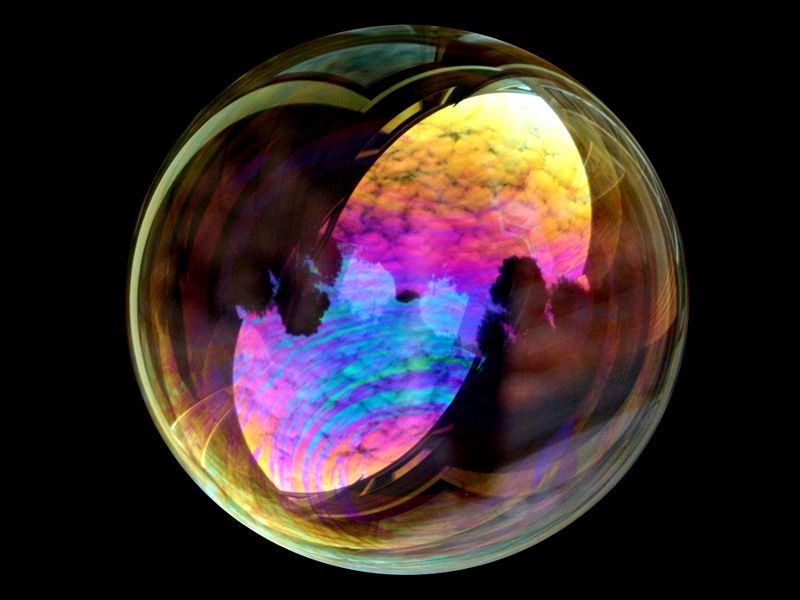
Viewers may soon be able to watch films on soap bubbles after researchers developed a technology to project images on a screen made of soap film.
An international team produced a display that uses ultrasonic sound waves to alter film’s properties and create either a flat or a 3D image.
The bubble mixture is more complex than the one sold in stores for children, but soap is still the main ingredient.
The team says the display is the world’s thinnest transparent screen.
“It is common knowledge that the surface of soap bubble is a micro membrane. It allows light to pass through and displays the color on its structure,” the lead researcher, Yoichi Ochiai from the University of Tokyo, wrote in his blog.
“We developed an ultra-thin and flexible BRDF [bidirectional reflectance distribution function, a four-dimensional function defining how light is reflected at an opaque surface] screen using the mixture of two colloidal liquids.”

Although traditional screens are opaque, the display created by Dr. Yoichi Ochiai and his colleagues Keisuke Toyoshima from the University of Tsukuba in Japan and Alexis Oyama from the Carnegie Mellon University in the US, varies in transparency and reflectance.
The team managed to control and exploit these properties by hitting the bubble’s membrane with ultrasonic sound waves, played through speakers.
Sonic waves alter the texture of a projected image, making it look smooth or rough.
Changing the wave’s frequency modifies the reflective property of the screen, meaning that the transparency of the projected image can also be changed.
“Our membrane screen can be controlled using ultrasonic vibrations. Membrane can change its transparency and surface states depending on the scales of ultrasonic waves,” wrote Dr. Yoichi Ochiai.
“The combination of the ultrasonic waves and ultra thin membranes makes more realistic, distinctive, and vivid imageries on screen.
“This system contributes to open up a new path for display engineering with sharp imageries, transparency, BRDF and flexibility.”
If several bubble screens are put together, viewers get a 3D effect and even a holographic projection.
The bubble is much harder to burst than a regular soap bubble, as the mixture contains special colloids – and objects can even pass through the film without popping it.
Previously, there have been attempts to develop untraditional displays – a computer screen out of water and a touchscreen out of ice.